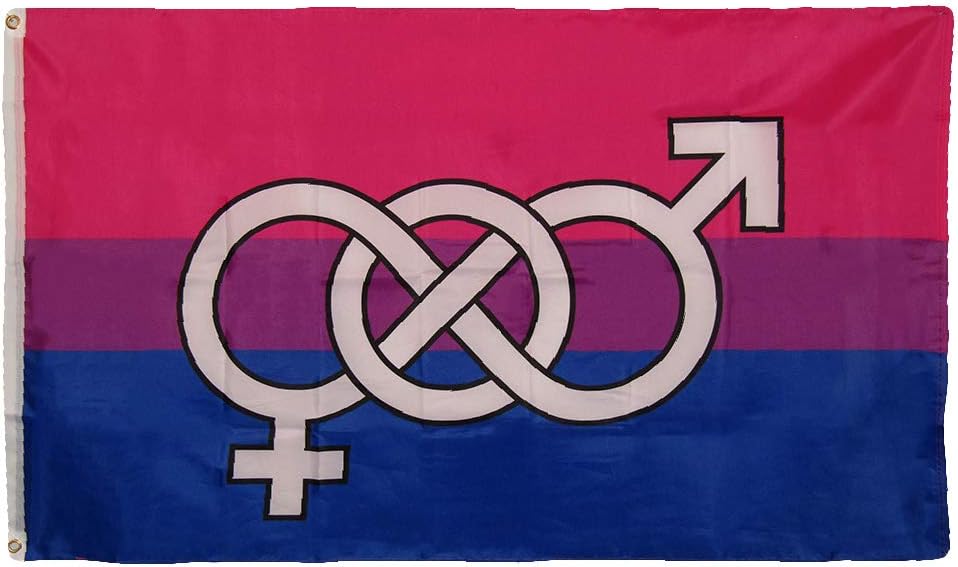Erasure of one’s identity is detrimental to one’s mental health. As previously discussed, erasure comes from the internalized need to fit into society. Anything that challenges the set norm of the world is looked down upon. The LGBTQ+ community has had to challenge norms and still continue to fight for their rights. As the second part of our identity series, we explore the most forgotten and erased community: the Bisexual community.

WHAT IS BISEXUALITY?
The American Psychological Association states that “sexual orientation falls along a continuum. In other words, someone does not have to be exclusively homosexual or heterosexual, but can feel varying degrees of both. Sexual orientation develops across a person’s lifetime–different people realize at different points in their lives that they are heterosexual, bisexual or homosexual.”
When an individual is attracted to both males and females, they identify as bisexuals. When an individual is attracted to all genders, it’s called pan-sexuality. Bisexuality exists on a spectrum and is fluid.

Bisexuals face a lot more discrimination even within the LGBTQ community which goes to show that even in the LGBTQ community, the strict reinforcing of the binaries must exist. Which is what bisexuals inherently dismantle.
Myths about Bisexuality
Because bisexuals are attracted to both genders, many people assume that they are on their way to being identified as gay/lesbian. This is one of the many myths that surround bisexuality. Let’s look at some myths:
- Bisexuality is a pit stop to being gay/lesbian
This is the most common myth surrounding bisexuality. From GLAAD, “It’s true that some people identify as bisexual before later identifying as something different, just as some people identify as straight before coming out as LGBT. Other people identify as gay or lesbian before coming out as bisexual. Bisexuality is unique because it recognizes the often fluid nature of romantic, emotional, and sexual attraction, but this does not make it any less legitimate than other sexual orientations. For the vast majority of people, it is not a phase, and anyone who identifies as bisexual deserves to have that identity respected.” - Bisexuals are undecided.

- Another common myth about bisexuality is that they’re undecided and love to experiment before picking a side. This is more of society’s view of looking at sexuality from the binary perspective: that one is supposed to decide with one gender/sexuality and stick with it for the rest of time. However, bisexuality challenges that notion. They aren’t undecided, they are attracted to both the genders.
- Bisexuals don’t face any discrimination.
This couldn’t be further from the truth. Even within the LGBTQ community, bisexuals face more discrimination. They struggle to be more visible in their own community. This comes from the fact that many people believe them to either be undecided. A lot of it comes from bi-erasure.
BISEXUAL ERASURE
Erasure is the removal of one’s identity (or part of one’s identity). Bisexual erasure in its extreme form takes place in its denial while in other forms may look like over-sexualisation of bisexual women in media.
Bisexuals aren’t 50/50 attracted to men and women. Some are more attracted to one gender. It does not make their bisexuality any less valid. When they are in a heterosexual relationship, they are seen as heterosexuals that appropriate bisexuality for fun or are experimenting. These individuals are also accused of fitting into the hetero-normative society so as to not face discrimination. While, in a homosexual relationship, they are seen as individuals who are closeted. This is erasure.
The myth that bisexuals cheat on their partners and spread Sexually Transmitted Diseases like AIDS stigmatize them deeply. This comes from the sexualization of bisexuals (which shows that they’re always willing to have threesomes and engage in sex because that’s what they all do.) And as a result of this, they are labelled as Polygamous (which is not necessarily true.)

Another way bisexual erasure takes place is when bisexuality is accepted in women and is not accepted in men. Men usually come out as just gay because it’s easier to be accepted in the gay community. This also comes as a result of biphobia.
Kenji Yoshino is a legal scholar and Chief Justice Earl Warren Professor of Constitutional Law at New York University School of Law. He lists out three motivations for bisexual erasure in his article in Stanford Law Review, The Epistemic Contract of Bisexual Erasure (2000),
The first of these motivations is sexual orientation stabilization, which is argued to relieve people from the anxiety of possibly having their sexual orientation questioned. This motivation reinforces the belief that bisexuals are simply undecided about their bisexuality and are fundamentally either homosexual or heterosexual, and it isolates, marginalizes and makes bisexuals invisible within the LGBT community.
The second motivation is the maintenance of the importance of gender, which is seen as erotically essential to homosexuals and heterosexuals whereas bisexuality appears to challenge this notion.
The third motivation is the maintenance of monogamy since a pair or bond is preferred by mainstream American culture. However, bisexuals are typically assumed by homosexuals and heterosexuals to be “intrinsically” non-monogamous. Thus, individuals both in the dominant culture and in the queer community resist bisexuality.
Juana Maria Rodriguez adds to Yoshino’s argument and posits that bisexuality breaks down traditional understandings of sexuality and the gender binary.
In the LGBTQ community, many individuals are under the impression that bisexuals don’t face any discrimination because they can be ‘passed’ as heterosexual. This coupled with the negative stereotypes that surround them leads to gross misrepresentation in the media and hyper-sexualization of bisexual women.
Many examples of bisexuality erasure can be seen in the media where bisexual celebrities are labelled as gay/lesbian or heterosexual. Most famous of those include: Lady Gaga, Madonna, Freddie Mercury and David Bowie.
MENTAL HEALTH EFFECTS
The effects on mental health on bisexual individuals are many. Because their sexuality is often invalidated in both the heterosexual and homosexual communities, they face more discrimination and microaggression than their gay/lesbian counterparts.
From the Human Rights Campaign Foundation report, it was noted that
When compared to heterosexual adults, bisexual adults reported double the rate of depression and higher rates of binge drinking. Bisexual adults were also more likely to engage in self-harming behaviors, attempt
Human Rights Campaign Foundation Report
suicide or think about suicide than heterosexuals, lesbians or gay men.
A Study shows that bisexual individuals suffer severely when it comes to mental and emotional well-being. The ‘Who I Am’ survey interviewed two thousand individuals who identified as bisexual. The research was published in the Australian Journal of General Practice and the results were shocking. A majority of the sample, 58%, reported either high or very high levels of psychological distress, with histories of anxiety, depression, and eating disorders the most common reported diagnoses. And 67% reported they had been diagnosed with mental illness by professionals. Almost half of the respondents disclosed self-harm or thoughts about suicide within just the last two years. More than one in four (28%) had attempted suicide in their lives and 78% had thought about it.
Erasure has harmful consequences. As shown by statistics, bi-erasure is real and can cause individuals to contemplate suicide more than their gay/lesbian peers.
Bisexuality is a valid sexual orientation. And it matters.
Erasing or diluting part of one’s identity forces people to think they aren’t good enough and that they have to be fitted into societal boxes to be happy. In any way, for bisexuality to have the same visibility as the gay/lesbian community, one has to make sure to give them their space to voice out their opinions. Bisexuality can get more visibility if the society shuns the hetero-normative view of life. Only if society accepts that love can be for and with anyone will bisexuals get the visibility they deserve. Bisexuality is an identity of its own.
Like Margaret Mead said, “The time has come, I think, when we must recognize bisexuality as a normal form of human behavior… we shall not really succeed in discarding the straitjacket of our cultural beliefs about sexual choice if we fail to come to terms with the well-documented, normal human capacity to love members of both sexes.”
